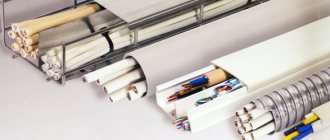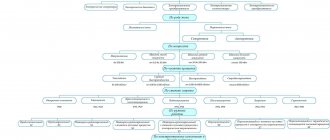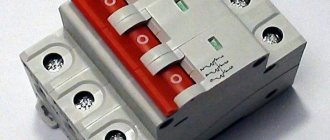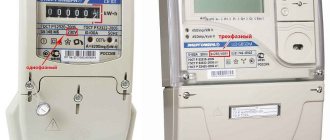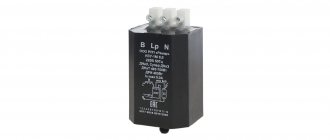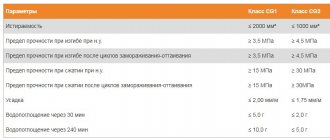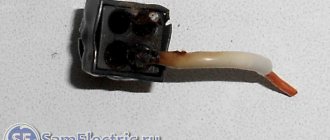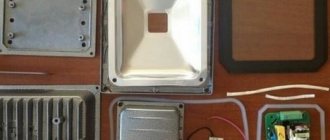No. 1. Why do you need a distribution board?
Electrical installation work in apartments, offices, garages and production facilities is not complete without installing a distribution board. Why is it needed, because previously many were content with distribution boxes alone? It's all about convenience and safety. If you continue to use only distribution boxes, then, for example, when replacing an outlet you will have to de-energize the entire apartment, and when connecting some powerful electrical appliances you will have to equip them with their own protective devices, and they also need space.
Installing distribution boards prevents the risk of electrical appliances burning out. Thanks to the shield, electricity is distributed evenly across all channels, eliminating excessive current flow through one of them. This device is especially important for large premises where enormous loads occur, and for residential buildings, distribution boards are also necessary, given how many electrical appliances people use at home today.
The distribution board is triggered not only when excessive voltage occurs, but also saves a person from electric shock.
No. 2. Main types of distribution boards
A distribution board can be responsible for the safe supply of electricity to an apartment, a floor, or a large building. Depending on the scale of the service area, electrical panels are divided into the following types:
- Main switchboard (MSB) is at the head of the hierarchy, installed at transformer substations and in large industries. As a rule, it is distinguished by its impressive size, is responsible for the power supply of the entire facility, and protects against network overloads and short circuits. The main switchboard, which evenly distributes electricity throughout all rooms, can automatically switch from the main power input to the backup one;
- The input distribution device (IDU) is installed at the entrance of the power cable to multi-apartment residential buildings, office centers, and industrial premises. The ASU distributes power lines for apartment and floor panels, keeps records of consumed electricity, and triggers in case of overloads and short circuits;
- emergency commissioning of reserve (AVR) is not used everywhere and is designed to switch consumers from the main power source to a backup one in the event of an emergency. AVR is necessary for hospitals and other institutions where continuous power supply is important. Sometimes such devices are used in cottages;
- floor shield (SHE) is installed mainly in residential buildings to distribute power to 2-6 apartments. In such a panel, space is allocated for modular automation and electricity metering devices. Can be used in administrative buildings;
- The apartment switchboard (ASB) is located at the entrance of the electrical cable into the apartment, usually installed in the hallway, vestibule, and less often near the front door. Apartment panels are familiar to almost everyone; they are used for protection against short circuits and overloads, distribution of group power lines and electricity metering. The choice of distribution boards of this type will be discussed.
Among other types, we note lighting panels (SC), which are necessary for rare switching off and turning on of automation; such devices protect against overloads and are used in public and commercial buildings. A control panel (CRB) is also installed in administrative buildings to control ventilation, heating equipment and alarm systems. An automation panel (ASB) is necessary to control software controllers for ventilation, heating systems, etc. There are also uninterruptible power supply panels (UPS), which are installed when connecting computing and medical equipment that requires a constant supply of electricity and is sensitive to voltage surges.
Common abbreviations
According to the PUE and GOST, generally accepted markings are used for shields, which accurately indicate their type and purpose. Common types of cabinets:
- ShchS - power shield;
- AVR - automatic switching on of a reserve (or automatic entry of a reserve);
- ShchR - distribution board;
- Main switchboard - main distribution board;
- ASU - input distribution device;
- SCHO - lighting shield;
- SHUR - accounting and distribution panel.
In residential or office settings, switchboards serve to protect electrical wiring and distribute electricity to consumers. Sockets, switches, household and lighting appliances are connected to it. However, in manufacturing enterprises and in institutions where equipment sensitive to voltage surges is used, the installation of electrical panels with a complex system of load distribution and automation is required. They have greater capabilities than electrical panels for the home, and large enterprises even have their own network of electrical substations. Let's take a closer look at what electrical panels are.
No. 3. Types of electrical panels according to installation method
According to the installation method, distribution boards can be divided into the following types:
- overhead, or external. This is the most common option, easy to install, but it will stick out somewhat forward in relation to the wall, which must be taken into account when choosing a location. Such shields are used to organize hidden and external wiring; they can be made of metal or plastic. Electricians advise installing overhead-type panels in wooden houses and bathhouses;
- built-in shield It looks more aesthetically pleasing and is installed flush with the wall, but its installation work is more difficult. The front panel must have a flange that covers the technological joint. Experts recommend choosing this option in cases where the number of outgoing lines is significantly less than the number of panel modules. Otherwise, it will be very difficult to pass a bunch of wires through the side walls;
- floor shields They are so large in size that they cannot be hung on the wall. They are not used in everyday life.
It is important to choose the right location for the electrical panel because our safety is at stake. The following requirements are put forward for the installation site:
- sufficient distance from fire and explosive substances;
- good natural ventilation;
- easy accessibility. If something happens, the electrician must make a minimum of effort to get to the panel;
- A sufficient level of natural light is desirable.
Shield installation
It is preferable to entrust the installation of distribution boards to highly qualified electricians, since these devices are designed to perform important functions: providing triggered protection, precise control of consumers and circuits, as well as control of energy consumption. First of all, you need to choose the type of distribution board - overhead or built-in.
- The overhead shield is used for external electrical wiring. Fastening is done with dowels, nails, or self-tapping screws. With such installation, many complain about the unesthetic appearance. You may not agree with this - today's market provides a lot of accessories in the field of electricity and its wiring.
The built-in type is placed in a special niche, takes up less space, and is suitable for structures with hidden wiring. For any type, you must first connect the appropriate electrical cables to the connection point.
Stages of work
Pay attention to the installation height of the switchboard (to make it convenient to operate), its dimensions (for the size of the niche), as well as the material from which the wall is made (this is necessary for the correct selection of tools). Then we will work with the wires - adjust them to length, remove excess insulation. We will install the electrical panel, stretch the prepared wires and carry out the wiring.
Don't miss: Installing a bathtub - on tile or under tile? How to install a bathtub under tiles
Don't forget to connect the security device. When working, be sure to follow safety precautions. Give preference to shields with a transparent door, this makes it easier to monitor the condition of the machines.
No. 4. Material of manufacture
The distribution board can be made of metal or plastic. The metal shield is more resistant to mechanical damage, is highly durable and reliable, and at the same time has decent weight. The appearance of such products is not the worst, but still not ideal, so metal panels are more suitable for installation in garages and industrial premises.
For an apartment it is better to choose a neat plastic shield . These are lightweight and aesthetic devices, and responsible manufacturers produce quite durable products that are not inferior in durability to metal ones and do not require mandatory grounding. Cheap plastic shields from little-known Chinese companies tend to turn yellow over time.
Shields made from a combination of plastic and metal are also available on sale.
No. 5. Protection of the shield from dust and moisture
The degree of moisture and dust protection is selected depending on the operating conditions of the equipment:
- for installation indoors, shields with protection according to the IP21, IP31 and IP32 standards are suitable;
- for outdoor installation The shield must have protection of at least IP54, as well as sealed doors and sealed cable entries.
No. 6. Types of distribution boards by design
According to the type of design and purpose, electrical panels are divided into the following types:
- modular ones are designed purely for the installation of modular equipment, they consist of slats and platforms for installing tires, everything is covered from the outside with a metal or plastic panel;
- registration boards They must have a platform for installing accounting equipment, which is attached to slats or screws. The design also provides for the presence of modular circuit breakers;
- accounting and distribution panels differ from devices of the previous type by the presence of a rail for mounting protective devices on outgoing lines. They also have a compartment for the input switching device, which is closed with a lid and can be sealed.
No. 7. Number of modules in the distribution panel
The fundamental difference between all panels is the number of modules. Some people mistakenly believe that their number should be a multiple of 12, but this is not always the case: panels designed for 16 and 18 modules are used, there are even compact models in which the number of modules does not exceed 10.
To determine how many modules are needed in your case, it is best to first draw up an electrical wiring diagram indicating all points of consumption, this includes sockets, lighting fixtures, and separate electrical appliances that consume a lot of energy (air conditioner, washing machine, boiler). Next, the groups are defined. For lighting wiring, circuit breakers with a current of 10 A are used, for socket wiring - 16 A. As switching and protective devices, you can use not only circuit breakers, but also RCDs, or replace these two devices with a differential circuit breaker. The number of RCDs, automatic devices and automatic devices must be known to correctly select the number of modules. It is also worth considering the presence of a counter and its size.
The width of one module is 18 mm, it is equal to the width of a single-pole switch. To connect a two-pole circuit breaker you will need 2 modules, a three-phase circuit breaker - 3, a single-phase RCD - 3, a three-phase RCD - 5, an electric meter - from 6 to 8 depending on its size (the width of the device can simply be divided by 18 mm).
For an apartment, in some cases, a shield for 12-16 modules is sufficient . If the meter is located in the panel, you will have to take a device with 16-24 modules. A large private house may require a shield for more than 24 modules. In large cottages, two panels are sometimes installed, since due to the large length of the wiring, in the event of an accident, one may not always work promptly, or may not work at all.
In addition, the panel may contain surge protection devices, photo relays or automatic light switches. If you are not sure that you can make the right choice of switchboard, then it is better to trust the specialists. Help will most likely be needed when assembling, installing the switchboard and connecting all groups of electrical appliances to it - it’s better not to joke with electricity.
Production and installation of lighting panels (SC), apartment panels (SC), distribution panels (SC)
Installation of the power shield (PS) is carried out in the following sequence. First, the product itself is installed and secured. Then, through the places provided by the design, incoming and outgoing cables for high-frequency currents are introduced, after which an input switch is installed, to which the wires of the input circuit are connected. And then, in accordance with the specification, all the necessary devices and fixtures are installed, to the terminals of which the corresponding conductors are connected. The connection of the power supply can be carried out using the TN-CS or TN-S grounding systems.
For the installation of the ShchR (distribution board), both basic elements are used, such as a zero bus, a grounding block, a rail for connecting machines, and additional ones: shutdown protection, an electricity meter, meters, etc.
No. 8. Manufacturers of distribution panels
Defective panels will not be able to perform their functions fully, being unable to distribute electric current evenly throughout all rooms. Also, such shields, if necessary, most likely will not turn off the damaged group of circuits automatically, so it is better to trust your safety to trusted manufacturers. The leader in terms of quality is ABB , but its products are expensive. Makel and IEK shields are a little cheaper, but the quality is very good. FOTKA shields made in Greece stand out. It is better to avoid nameless products made in China and Turkey - this is not a case where you can save money.
Finally, we note that, other things being equal, it is better to give preference to shields with a transparent door, which provide easier control over the state of the machines.
The article was written for the site.
Tags:Electricity
Purpose of the device
AVRs perform various functions:
- protective mission that protects the line from overloads and short circuits;
- constant monitoring of the voltage state in the circuit;
- alarm requiring a specific unit to be stopped or started;
- purposeful transition to a backup source, and when voltage is restored, return to the main one.
The device uses two schemes - with a single working section and one spare, and double-sided, in which both working lines can be both main and spare.
The distribution point receives and distributes electricity. One of the functions of the PR is to organize the safety of all kinds of installations at high voltage from overloads, short circuits, operational switching in the electrical circuit, and also provides protection against electric shock to humans.
Electrical wiring diagram in the garage - features of design and installation with your own hands. 120 photos of wiring examples and video instructions for replacing wiring in the garageWhich wire to use for grounding: calculation of parameters, marking and purpose of various types of wires (video instructions + 150 photos)
Power cable brand ASB - characteristics, classification and rating of the best manufacturers. 115 photos and video instructions for choosing
The uninterruptible supply panel makes it possible to provide power to various mechanisms of computer technology, control systems and alarms, and medical equipment.
Commercial metering of electricity in three-phase networks is carried out using a metering panel installed in residential buildings, offices, and industrial facilities. The shield must be sealed and locked with a key. To make it more convenient to take meter readings, there is no special window installed.
The task of lighting panels is to effectively control specific electrical circuits, while protecting them from all kinds of problems. They control lighting installations and devices of various types and series.
All types of switchboards can be found on websites that will provide comprehensive information about switchboards and offer bright and colorful photographs of products
